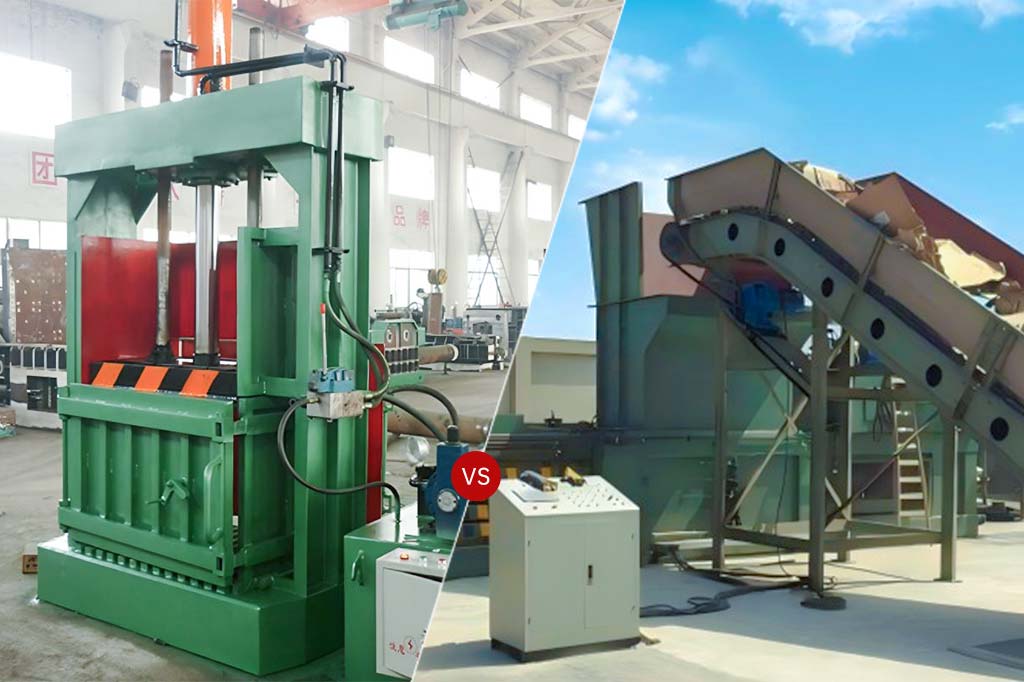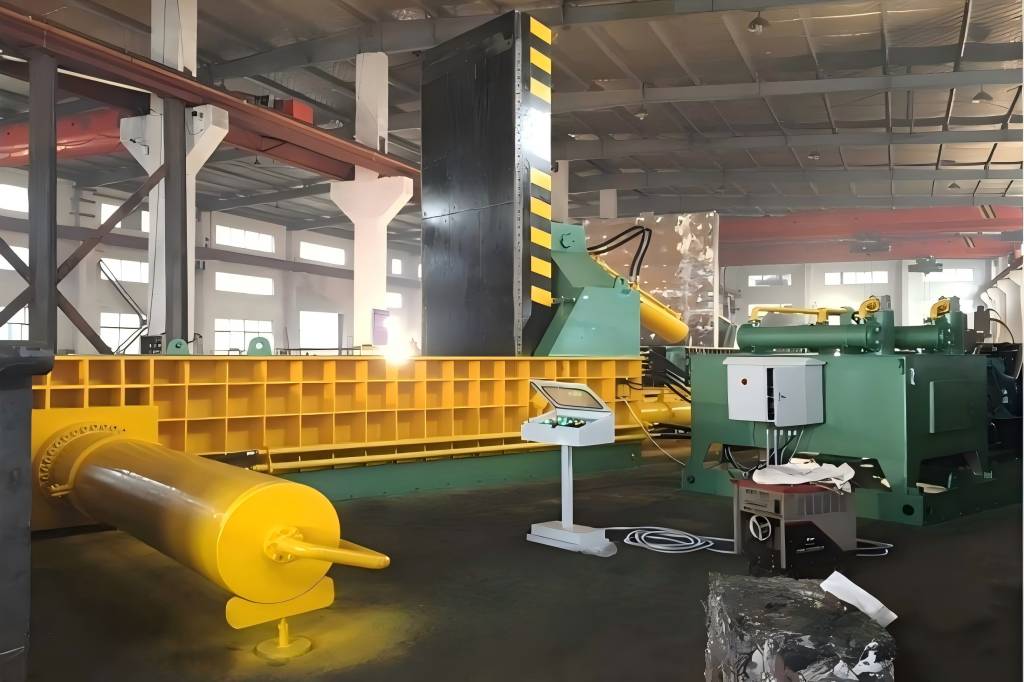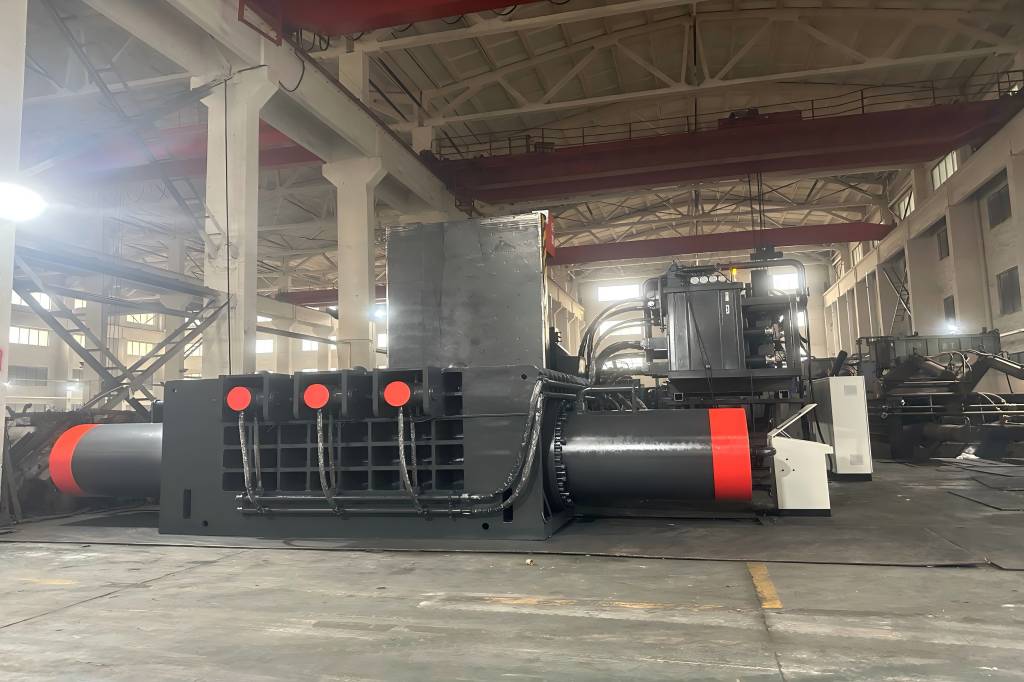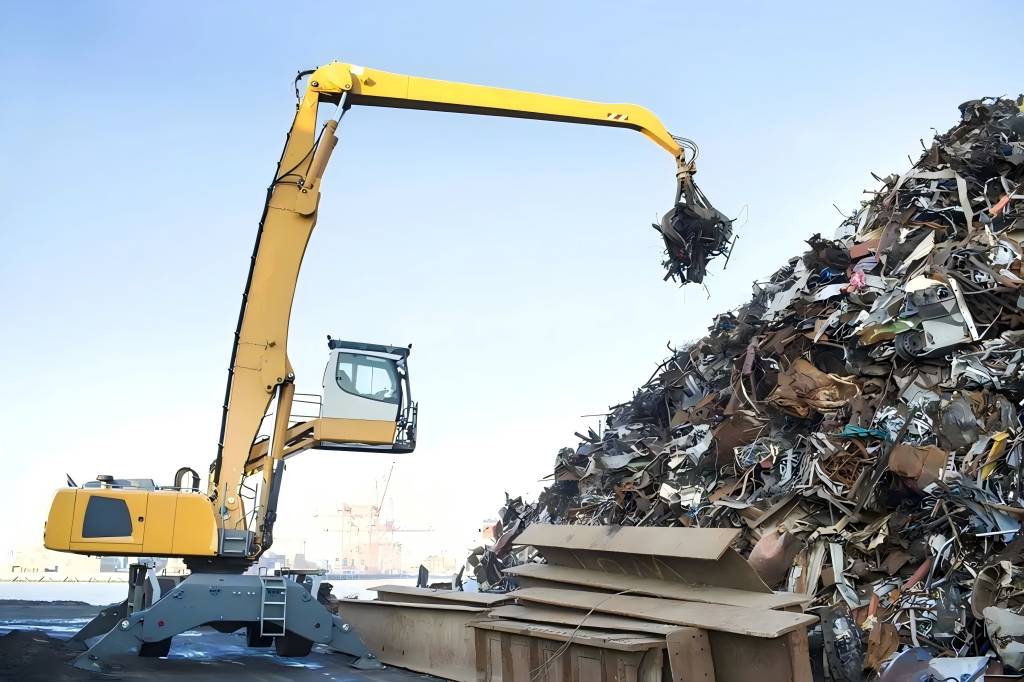As environmental concerns rise, businesses are prioritizing efficient waste management solutions. Cardboard recycling is particularly important for industries like retail and manufacturing.
Balers are crucial for compressing cardboard into manageable bales, and choosing between vertical and horizontal models can significantly affect recycling efficiency and costs.
This article explores the characteristics, advantages, and disadvantages of both types, offering a guide for businesses to make informed decisions.
Understanding the Types of Balers
Vertical Balers
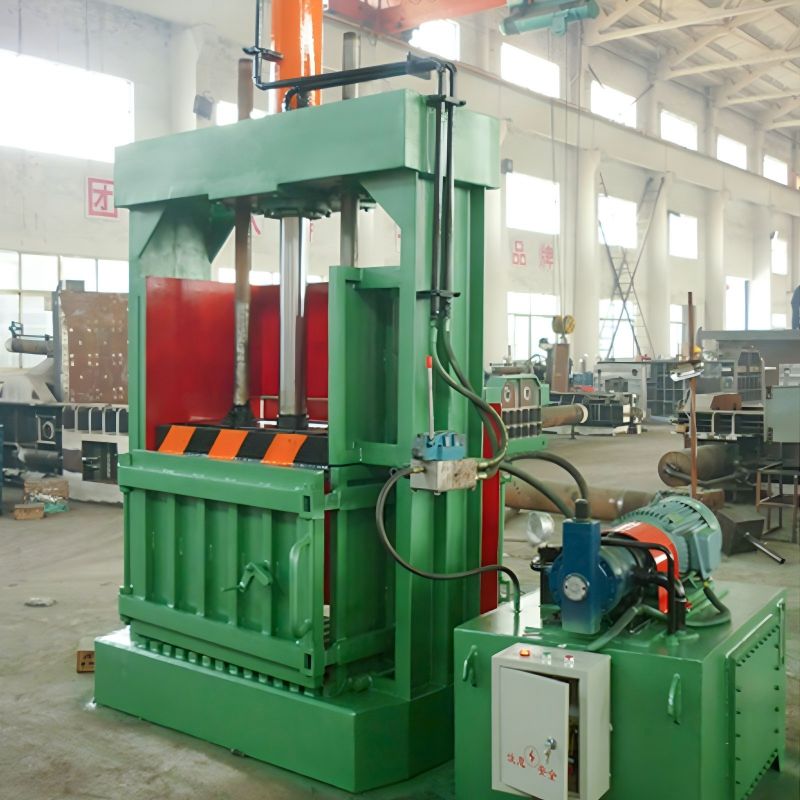
Vertical balers, also known as upright balers, are designed to operate in limited spaces. They work by compressing cardboard waste from the top down into a vertical chamber. Once the cardboard is compacted, the baler ties off the bale and ejects it for transport or storage.
These machines are perfect for small to medium-sized businesses with moderate waste volumes because they are often easy to use.
Horizontal Balers
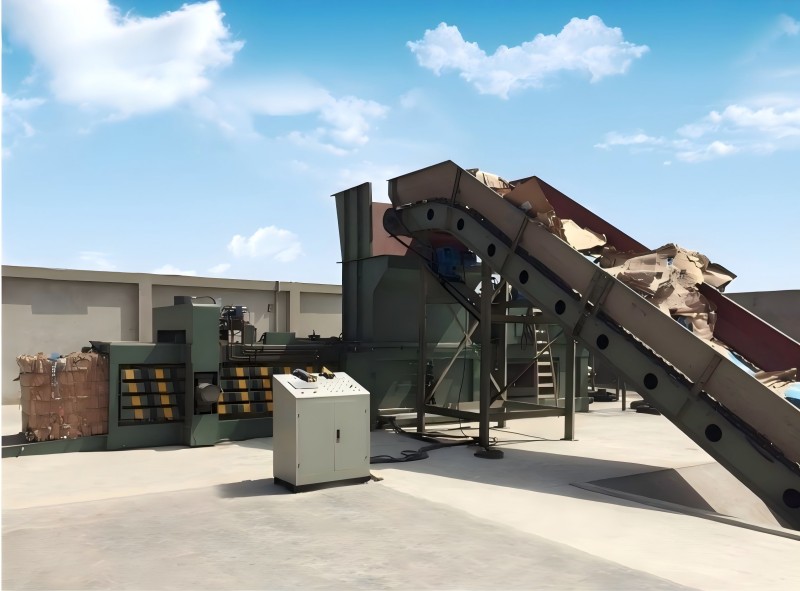
In contrast, horizontal balers feature a more extensive design that allows for the continuous feeding of materials. These machines compress cardboard horizontally, producing larger bales that can be ejected from the side.
Horizontal balers are typically more powerful and capable of handling high volumes of waste, making them suitable for larger operations.
Comparative Analysis
To help businesses evaluate their options, the following table outlines the key differences between vertical and horizontal balers:
| Feature | Vertical Balers | Horizontal Balers |
| Space Requirement | Compact; ideal for limited space | Larger footprint; requires more space |
| Waste Capacity | Lower capacity; suitable for small to medium waste volumes | High capacity; ideal for large waste volumes |
| Bale Size | Smaller bales | Larger, denser bales |
| Operational Efficiency | More manual labor needed | Often automated; higher efficiency |
| Cost | Lower initial and maintenance costs | Higher initial investment; potential long-term savings |
| Ease of Use | Easy to use; little training is needed | More technical knowledge and training might be needed |
| Transportation Cost | Higher due to the smaller bale size | Lower due to larger, more efficient bales |
Advantages of Vertical Balers
- Space Efficiency: Vertical balers are perfect for companies with little space for machinery because they occupy less floor area.
- Cost-Effective: They generally have lower purchase and maintenance costs, making them an appealing option for small to medium-sized businesses.
- Simplicity: Vertical balers are easier to operate and can be handled by a single employee, reducing labor costs.
Disadvantages of Vertical Balers
- Limited Capacity: These balers are not designed for high-volume waste, which may lead to inefficiencies in larger operations.
- Manual Labor Requirement: Vertical balers often require more manual loading, which can slow down the recycling process.
Advantages of Horizontal Balers
- Higher Capacity: Horizontal balers can process significantly larger volumes of cardboard, making them suitable for high-capacity recycling operations.
- Automation: To increase efficiency and decrease the need for manual labor, many horizontal balers are built for automated operations.
- Larger Bales: They produce larger and denser bales, which can lower transportation costs and maximize storage efficiency.
Disadvantages of Horizontal Balers
- Greater Initial Investment: Smaller firms may be put off by the greater initial cost of buying a horizontal baler.
- Space Requirements: Because these machines need greater floor space, they may not be suitable for establishments with limited space.
- Operational Complexity: Horizontal balers may require more training for operators, increasing the complexity of operations.
Factors to Consider When Choosing a Baler
Volume of Waste Material: The amount of cardboard waste generated is a crucial factor. Businesses with lower waste volumes may find vertical balers adequate, while high-volume operations will likely benefit from the efficiency of horizontal balers.
- Space Restrictions: Determine how much floor space is available for the apparatus. Vertical balers are more suited for limited spaces, whereas horizontal balers require ample room for operation.
- Operational Efficiency: Assess each baler’s capacity to process garbage in a timely and effective manner. Horizontal balers often enable faster operations through automation, while vertical balers may necessitate more manual labor.
- Bale Dimensions and Density: Take into account the dimensions and density of the generated bales. Generally speaking, horizontal balers produce larger bales, which can save transportation expenses and boost productivity.
- Cost Considerations: Weigh the initial investment and ongoing maintenance costs against the potential long-term savings each type of baler offers.
Environmental Impact
Both vertical and horizontal balers contribute positively to recycling efforts. Efficient cardboard recycling reduces landfill waste and promotes sustainable practices within businesses. Selecting the right baler can enhance these environmental benefits.
For example, businesses that produce large quantities of cardboard waste may achieve greater sustainability with horizontal balers, while smaller operations can effectively manage their waste with vertical balers.
Case Studies: Real-World Applications
To illustrate the practical applications of each baler type, consider a medium-sized retail store that generates a moderate amount of cardboard waste. This store may benefit greatly from a vertical baler, which would offer a practical and affordable answer to its recycling requirements. The store can save space while ensuring its waste is compacted and easily handled.
On the other hand, a large manufacturing facility producing substantial amounts of cardboard waste would benefit more from a horizontal baler. This facility could automate many of its operations, handling large quantities of material continuously and producing larger bales for transport. Improved operational performance and reduced labor expenses are possible outcomes of this efficiency.
Conclusion: Making the Right Choice
In summary, choosing between vertical and horizontal balers for cardboard recycling depends on factors like waste volume, space, efficiency, bale size, and cost. Smaller businesses with limited space may prefer vertical balers, while larger operations generating significant waste will benefit from the efficiency of horizontal balers.
Businesses may enhance waste management by evaluating their requirements and balancing the advantages and disadvantages of each type. Understanding these options is essential for minimizing environmental impact and promoting sustainability.

